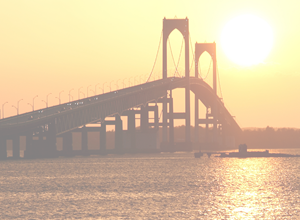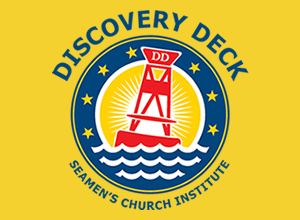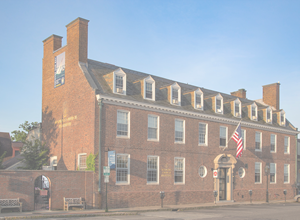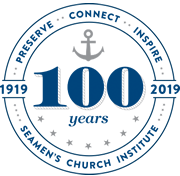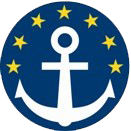Ruth Taylor – Centennial Year Guest Speaker
In this brief talk today I hope to connect the history of the SCI in Newport with the trends in thought and activity in Newport in the early 20th century, and in the broader region. It is easy to for any of us to focus on a local story. But your story, as with many Newport stories, is in fact bigger than that. It is connected to important trends in national and international history. By placing our activities into a larger setting, it can help us focus in on who we really are. This can help us examine how mission has been expressed in the past, and what that tells us about what we might do in the future. Which seems very appropriate for a centennial anniversary.
1919, the year of your founding, was in the middle of tumultuous times. Across the world, while the fighting of WWI had ended, a variety of conflicts raged in Europe and elsewhere.
It seems to me that the disruption and horror of war often becomes, at least for some, an impetus to think about making the world a better place. After all, nothing concentrates the mind like the possibility of a hanging. By which I mean that a brutal war can certainly cause us to think hard about a better world.
For example, after centuries of religious persecution, and his own experiences of this, Roger Williams, Rhode Island’s European founder, literally set about trying to create a new way to live with our faith – one that did not deny others the right to believe differently. These beliefs, which did in fact influence huge changes in the world, were not universally accepted at the time. Because the truth is that social change, even what history reveals as benign and useful change, causes consternation, at least, and is not always effective. After the horrors of the Civil War, many had the impulse to move to ensure a more racially just society going forward, but this is not exactly what happened. The Vietnam War was at least part of the trigger for the social upheaval of the 1960s, which, while tied to ideas about making things better, more humane, more human, was not entirely peaceful, or successful in doing so.
1919 was right in the middle of a similar moment. WWI was over, but the whole world continued to convulse. Following the war, left wing movements and workers’ strikes were on the rise around the world, including violent conflicts between workers and their bosses in America. The KKK was active, and racial violence erupted in 26 cities. Some Black service men returning from WWI were lynched. Left-wing activists worked in the US, in ways both legal and not, to advocate for better rights for working people and the poor. The US deported a number of radicals to Russia, which was in a state of violent revolution, including Emma Goldman. An influential group of citizens believed that alcohol was a source of our social ills, and in 1919 managed to get an amendment to the Constitution to ban it, nationally. There were disasters: almost 200,000 died from a flu pandemic, molasses killed and hurt over 100 people in Boston, and there were a large number of serious losses at sea. Women were agitating, often violently, for the vote, and an Amendment to the Constitution giving suffrage to women was sent to the States for ratification in 1919.
It was a time of creativity and innovation as well. Albert Einstein’s theory of relativity was supported with scientific data, and dial telephones were introduced. The first non-stop transatlantic flight took place. The pop-up toaster was invented.
In this chaotic time, Newport Rhode Island continued to maintain a strong bond with the ocean. After almost 300 years of maritime trade, and a connection to the US Navy which started with its conception, a relatively high number of Newport men made their living on the sea. Here too, after the war, many returning sailors filled the community, needing support to return to normal life. Merchant marines, fishermen, and other mariners also had regular and recurring needs.
In New York, a place with which Newport has an historic connection, a Seamen’s Church Institute had existed since the mid-19th century. The Seamen’s Church Institute in New York, established in 1834, was begun as a series of floating, land-based and open-air chapels to minister to mariners in
New York and New Jersey ports. Later in the 19th century, boarding houses were sponsored, to protect sailors ashore from predatory landlords. In 1912, the New York SCI consolidated its various locations into one substantial building in lower Manhattan.
The notion of a seaman’s aid society was not new to Newport. As early as 1754, a society had been formed to collect dues from members, mostly captains of ships, to be used to support sailors and their families and to bury them as needed. Originally called the Fellowship Club, it became the Marine Society at some point, and functioned at least into the mid-19th century. The members included many of the important names of Colonial Newport, and the structure of the society was much like other benevolent societies – “we understand than some of our number may fall upon hard times, and we get together now to pool money to ensure against that.” Less of a charity, more a mutual insurance company, the minutes (which are at the NHS) are filled with the collection of dues, the fining of members who missed meetings or funerals, the petitions of widows for support, and the visitation of committees to some of those widows who appear to be asking too regularly.
In the year or so before 1919, however, several prominent residents came together to create a more charitable institution. While the Seamen’s was connected to the Episcopal Church, a variety of denominations were reporting a great concern for the spiritual and physical well-being of mariners starting in the 19th century, and a number of sailor’s aide societies were established. There was a general concern in the nation about the hardness of the work at sea, and the ease with which one could become unable to work. The idea of an agency for sailors was very much in line with the national and even world-wide movement to support and protect workers. But it also reflects a concern that life at sea might not make conformance to social norms and religious proscriptions easy or natural. Henrietta Deblois, who accompanied her captain husband on a three-year whaling trip in the mid 19th century reflected in her diary, on their approach to home that one of the difficult things to contemplate was her ability to return to a regular Christian life ashore.
The original site for the new organization was on #2 Green Street, and in 1920 the officers were: Pres. Hugh Barclay Baker VP Alfred Tuckerman (NY) Sec. William H. Lawton Treas. Hamilton Fish Webster (NY) ($$)
Both Tuckerman and Webster had residences in NY and certainly were aware of the model there. These were involved citizens. Webster seems to have had a comprehensive interest in helping what we would now call the working poor, or the lower middle classes. Here in Newport he also established a trust to help with the medical bills of middle-class people who found themselves unable to pay. The Redwood has his portrait, as he was also involved there. Tuckerman was also an officer at the NHS and was involved in the creation of our headquarters building on Touro Street in 1915.
The Superintendent was the Rev. R.W. Magoun, an Episcopal minister. The minutes of the Episcopal convention in 1918 report that Magoun had been visiting the Naval hospital, and “ships of all sorts in the harbor” and acting as a “most efficient missionary to seagoing men, both of the Navy and the Merchant Marine.”
As an interesting aside, 1919 was also the year of the not often discussed Newport Navy sex scandal. In this event, Assistant Secretary of the Navy Franklin Delano Roosevelt participated in a plan to use Navy investigators to entrap men into homosexual acts and then arrest them. This was in response to reports that there was a thriving gay demimonde in Newport, with men meeting at a number of clubs and private homes. Which there was. The Army/Navy YMCA and the Newport Art Association were also implicated.
A good number of sailors and civilians were arrested and kept in deplorable conditions on a prison ship for about 6 months. In the end, a huge part of the scandal was that the Navy brass had encouraged their investigators to
engage in same gender sex in order to entrap others. Locally, however, the outrage seemed to center on the denial of due process for the local “boys.” The Newport community, including some Navy officers, appears to have been tolerant of the gay subculture of the time, which included a great deal of performative cross-dressing. The whole story was well reported and documented and has been the subject of some scholarly research. It is an interesting window into conflicting notions about morality and justice. And a sense of how concerns about the morals of sailors seem to be a common thread in all this.
Now let’s talk a bit about the Wetmore sisters, who built this building for the SCI: Maude and Edith Wetmore, who summered at Chateau sur Mer and wintered on Beekman Place on the upper east side of Manhattan. They too are exemplars of their time. Born into the NY 400 and inheritors of great wealth, they also came to adulthood as the Gilded Age was waning. Changes in society led a growing number of well-off young women to avoid marriage, and both sisters did so.
Edith, the elder sister, became a patron of the arts, and Maude was particularly interested in historic preservation. They continued to occupy Chateau until they died in the mid 20th century. They hosted events and participated in the life of cultural institutions. They were both involved in the creation of the Old State House Society and the restoration of the Colony House in the 1920s. So their decision to build for the Seaman’s, which had been operating only a few years, a beautiful new facility on the waterfront in the late 1920s seems very in keeping with their interests, and that of their moment.
They certainly must have had some knowledge about the New York Institute’s large building on the waterfront. Its funding and construction in 1912 were notable events – the building cost $1,000,000, the equivalent of something like $26 million today, and was built after a decade of fundraising. New York’s notable philanthropists were all participants in this, including JP
Morgan, John D. Rockefeller and three Vanderbilts – William, Alfred and Frederick.
The location chosen for the Newport facility, Market Square, was near Jamestown Ferry, Government Landing and the Police Station. The property was purchased from businessman JT O’Connell in 1928. A row of wooden buildings demolished. Why were ancient wooden buildings demolished, an act that makes preservationists today cringe? Like the creation of Washington Square and the clearing out of 17th century buildings around the Colony House (which the Wetmores also may have suggested), Newport in the 1920s was all about modernizing, and preserving only what were seen as the important buildings that contributed to a narrative of grandness. The “ancient supernumerary structures,” as one report called them, were an easy sacrifice. Attitudes have changed, but maybe not so much, as we have continued this process into recent years — the creation of America’s Cup Avenue being one of the most notable examples.
The building itself was designed by Newport architect Frederick Rhinelander King, and was given to the Institute in 1930 with an assessed value of $75,000.
Let’s go back to New York for a moment. While the original impetus had been a focus on the spiritual health of mariners, New York’s SCI, without abandoning that thread, also focused on the physical and economic health of its clients. And it continued to be an institution well-situated in its time and place. It advocated for workers rights for mariners in the late 19th and early 20th centuries along with sailors’ unions, and played a role in national legislation regarding those rights. It created an employment bureau for mariners seeking work on ships, especially during the Depression, and provided so many sailors ashore with mailboxes that it ultimately opened a branch of the US post office at its headquarters. It had a library, inexpensive rooms and a lunch counter, as we do here. It also housed a doctor’s office, and a radio service to provide medical advice to ships at sea.
Today, the NY SCI has expanded its geographic reach to reflect the realities of sea and inland water-based commerce in the 21st century. It has focused on job training, legal services and advocacy, while retaining a focus on pastoral care. It changed as the times and circumstances changed while preserving its core mission.
And, here in Newport, your SCI is also adapting. The original mission, to “provide work for the moral and mental improvement exclusively of all of those who are employed upon or in connection with the sea in any part of the world or upon the inland waters of the United States, including men in the service of the United States…” has been updated without losing its core. You are focusing on all those who engage with the waterfront. But, as I understand it, you are also thinking about your future.
In this you are not alone.
What should all of us who run small non-profits be thinking about when we try to envision our future? I think the trick is to be both timeless (mission based) and timely (responsive to the times). I think as we look back at the history of the Newport SCI, we see both of those principles being expressed.
In regard to mission, while it is occasionally the case that a mission outlives its usefulness – Society for the Preservation of Passenger Pigeons, for example – it is more often the case that there is something timeless and useful there. And, a sense of the value, and perhaps the dangers inherent in our connection to and use of the sea has not lost its appeal.
In regard to timeliness, we need to think about our audiences. There is no useful work without an understanding of whom we do it for. And here, we get to both define whom we wish to serve, and potentially respond to those who happen to be here. I often think about the fact that the differences in approach and expertise that developed between the Newport Historical Society and the Rhode Island Historical Society (from which we came) has much to do with the fact that Newport gets 3 million tourist visitors from all
over the world each year, and Providence does not. We have evolved, if you will, a set of approaches and expertises that deal specifically with talking to the general public about history, because they are here. But, in focusing on the largest of our audiences, the tourists, we endeavor to also not abandon the residents, scholars and students who are perhaps our oldest audience.
We need to know, too, what our audiences want from us. Because the world is changing, and people are, too, this can be a target that moves frighteningly fast. But, knowing your audience can significantly change any planning process. Recently, the NHS surveyed its Museum audiences and we were completely surprised by their experiences of visiting the Museum. From our perspective, it was dated, tired, and needed a complete overhaul. From theirs, almost universally, it was a good, easily consumed overview of Newport’s history, with a really great and educational gift store. Plans to knock the blocks down must now be revised.
Perhaps not finally, but in conclusion here, we all should be thinking about what our past suggests about our strength and value going forward.
Predicting the future may be impossible, but we can say with some certainty that things will change, and that decisions that we make today may not stand the test of time. We can also have some understanding of the trends that are unfolding around us. Today, we have changing work, educational, travel, and philanthropic patterns here in Newport and world-wide. All of these things will have an effect on the way we do business. In addition, the whole non-profit sector may be about to experience a shift. The fact that the newest generations think about giving materially differently than their parents, the way our government has chosen to remove some encouragements to non-profit donations and is thinking in new ways about the social safety net, all of these will have impacts.
But we can look at our past to learn lessons of adaptability and vision. For the Seamen’s, you can look backwards to see an institution that brought together people from all walks of life, from philanthropists to homeless mariners. An organization that was formed in social upheaval as a place of sanctuary and peace. A center of support for those whose struggles were generally in service more to others than themselves. A place that provided tools for people making their way in the world. Can these things, bound together by the eternal sea, be consistent guides to continued usefulness in an unknowable future? I think the answer is yes.
